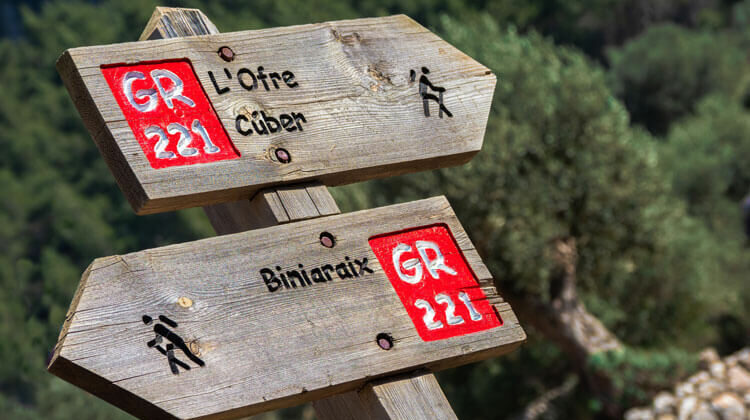
Are you ready to swap your flip-flops for hiking boots and embark on an adventure that will take your breath away? We’re off to conquer the Serra de Tramuntana in Mallorca, an impressive mountain range that even UNESCO couldn’t resist protecting it. Our mission? To walk the legendary Pedra en Sec GR 221 route, an emblematic trail.
While the masses flock to Mallorca for its beaches, we can tell you a little secret: the island is a hiker’s paradise with thousands of routes. From towering peaks to serene coastal paths and plains, Mallorca is like a buffet of breathtaking landscapes – there’s something for everyone and no calories!
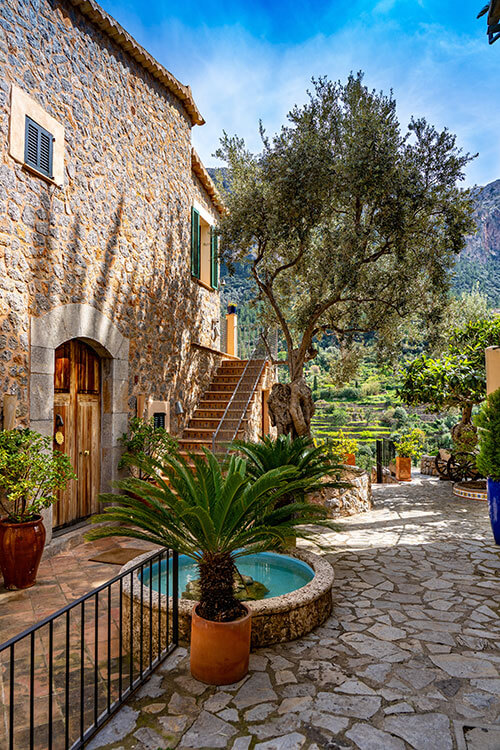
So, pull on your boots, bring your sense of adventure (and maybe a compass), and get walking!
Exploring the Serra de Tramuntana mountain range
Did you know that the Serra de Tramuntana is not just a pretty face in the world of mountains? It has been declared a UNESCO World Heritage Site for its breathtaking beauty and the centuries-old dance between human endeavour and Mother Nature. This incredible spectacle has created a protected paradise for flora and fauna, a birdwatcher’s dream and a hiker’s paradise.
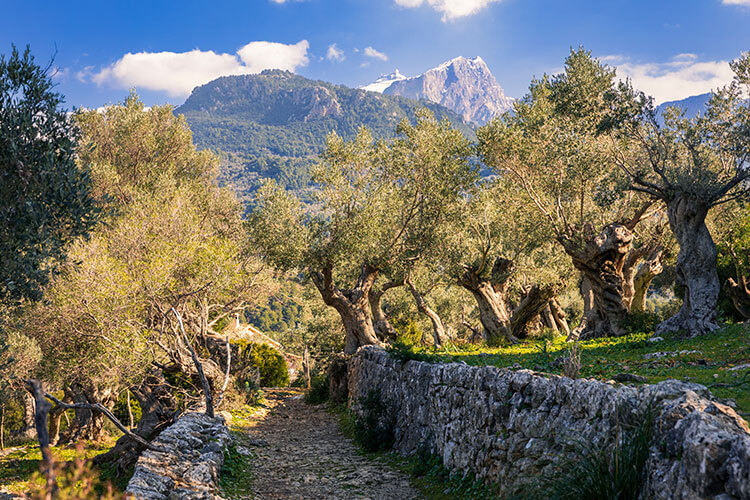
Puig Major, with its 1,436 metres, is not just any mountain. It is the highest in the Balearic Islands, closely followed by the majestic Penyal des Migdia, which reaches 1,398 metres. And let’s remember Puig de Massanella, in a respectable third place at 1,364 metres. These peaks offer some of the most impressive panoramic views of the island.
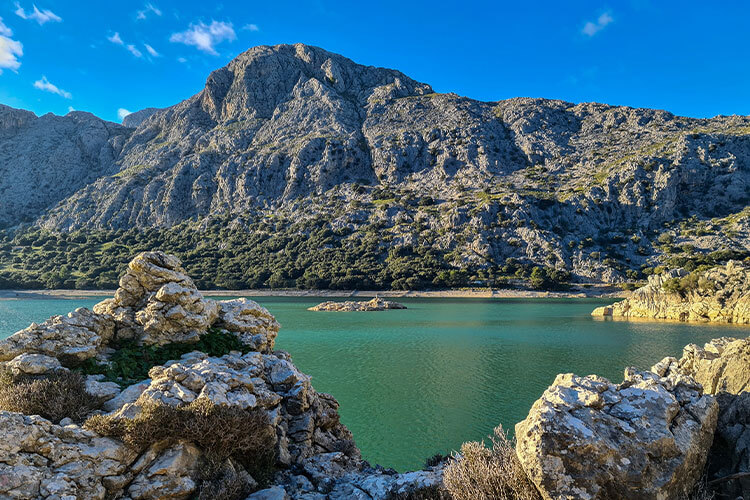
Its climate is more like a refreshing oasis. With up to 1,507 mm of annual rainfall, it is a lush green paradise compared to other parts of the island, where the rain gauge barely reaches 400 mm. The mountain range enjoys cooler temperatures thanks to its altitude, offering a welcome escape from the heat. And yes, there are even a few snowy days in winter, perfect for those magical winter walks!
The GR 221 Route: An Unforgettable Adventure
Get ready to embark on the GR221, also known as the Dry Stone Trail. This 119 km mountainous wonderland stretches across the Serra de Tramuntana, from Pollensa in the northeast to Port d’Andratx in the southwest.
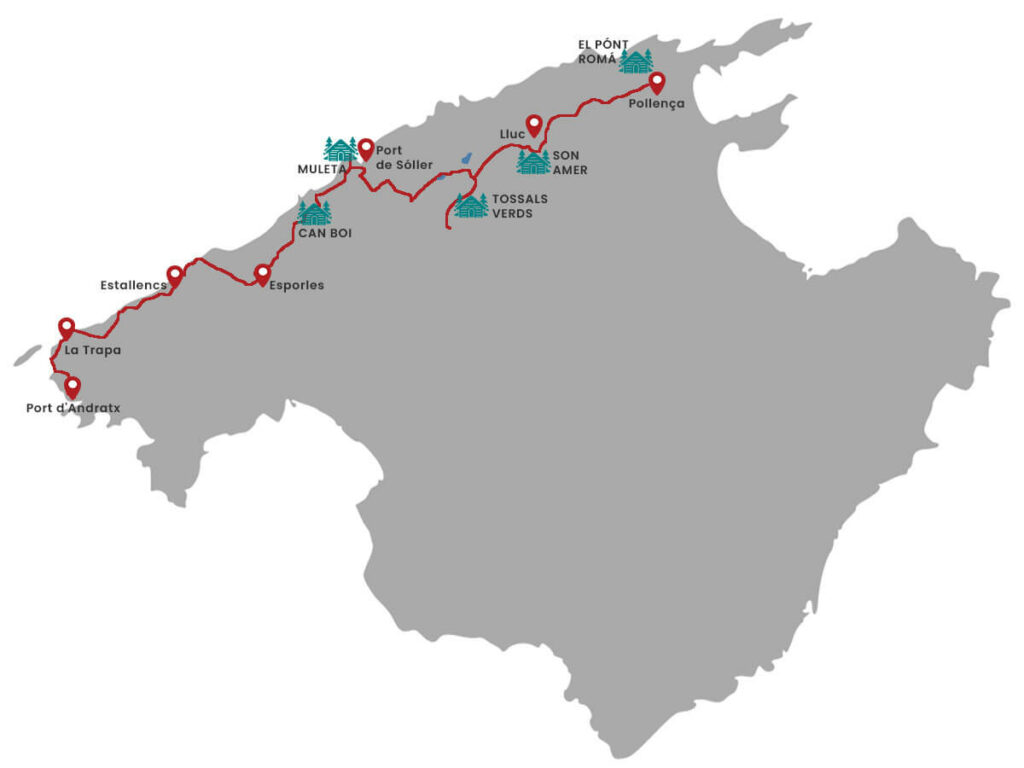
This trail is not just a scenic walk but a journey through the heart of Mallorca’s culture and history, a mosaic of ancient paths and dry-stone tracks that have served the mountain people since time immemorial. These paths are so old that they will tell you past secrets if you listen carefully. You will meander through urban centres such as Port d’Andratx, San Telmo and the charming streets of Pollensa, with detours that can take you to hidden gems such as Galilea and Mancor del Valle.
What is the Pedra en Sec? Along the way, you will find various “pedra en sec” constructions: ancient walls, terraces and snow pits. These are not randomly placed rocks but the testimony of a traditional building technique that is as much a part of Mallorca as olives and sunshine. In fact, this unique landscape led to the Serra de Tramuntana being declared a World Heritage Site in 2011.
As you walk along public paths, meander through municipal land and even tiptoe past some public estates, remember: you are walking through a living museum, a landscape shaped by centuries of human contact and the vagaries of nature. It’s a walk, a history lesson and a cultural immersion.
Exploring the 8 Stages of Dry Stone Route
Stage 8: Pollensa – Lluc (Son Amer)
6 h · ↑250 m ↓700 · Difficulty:
Start or finish your adventure with this delightful 16.7 km hike from the Pont Romà hut in Pollensa to the Son Amer hut in Lluc. It’s a four-and-a-half-hour walk on a gentle uphill slope (or downhill if you do it the other way around). The Monastery of Lluc offers a feast for hungry hikers: traditional Mallorcan delicacies and the chance to spend a quiet night in the monastery.
Stage 7: Lluc – Refugio Tossals Verds
5 h 15 min · ↑830 m ↓800 · Difficulty:
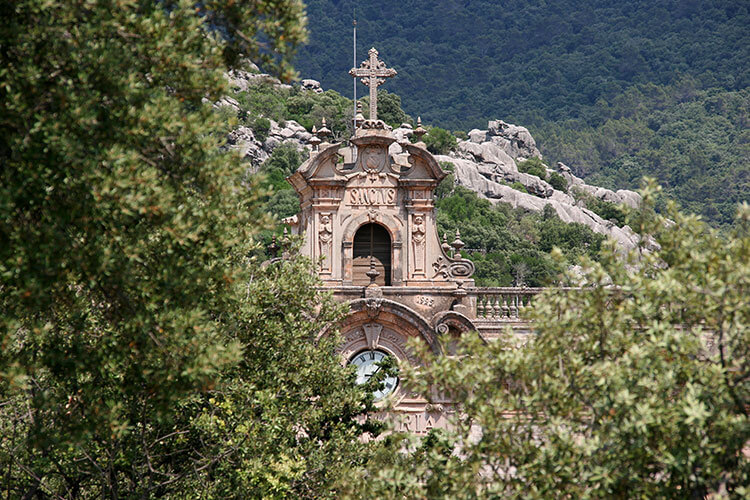
Get ready for 15.1 km of incredible beauty and challenge. This stretch features two of the highest mountains in the area, including the majestic Massanella. The path, adorned with historic snow pits and leading to the staffed Tossals Verds Refuge, is perfect for a night under the stars.
Stage 6: Refugio Tossals Verds – Cuber – Puig L’Ofre – Barranc de Biniaraix – Sóller – Port de Sóller (Muleta)
8 h · ↑970 m ↓550 · Difficulty:
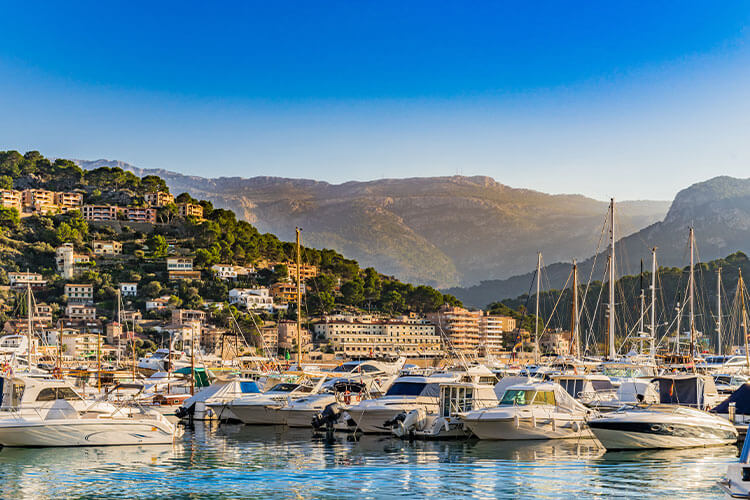
The longest stage of the trip is this 28 km stretch with a great diversity of landscapes. The climb to Puig d’Ofre stands out, with impressive views that reward the effort. Starting from the picturesque Tossals Verds refuge, this route is a feast for the senses.
Stage 5: Port de Sóller (Muleta) – Deià (Can Boi)
3 h 15 min · ↑220 m ↓270 · Difficulty:
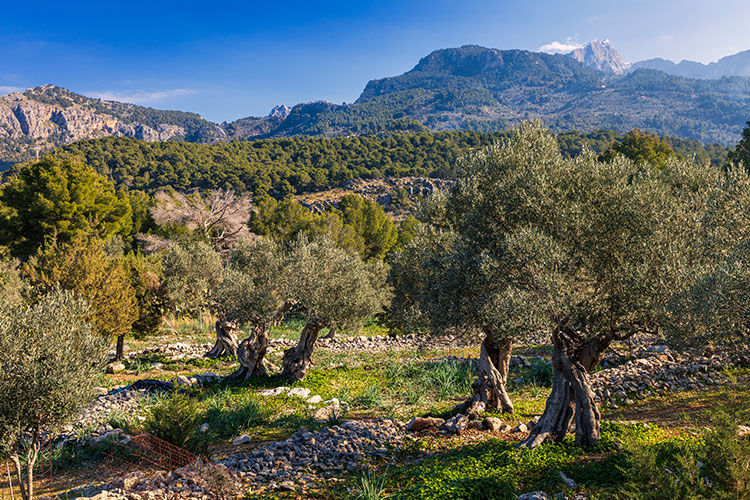
This 10.1 km coastal path is a scenic wonderland, ideal for a 3-hour walk. Whether you head north or south, you’ll find cosy spots at the trail’s end to enjoy a refreshing drink and a good meal.
Stage 4: Deià – Valldemossa – Esporles
6 h 30 min · ↑1120 m ↓1170 · Difficulty:
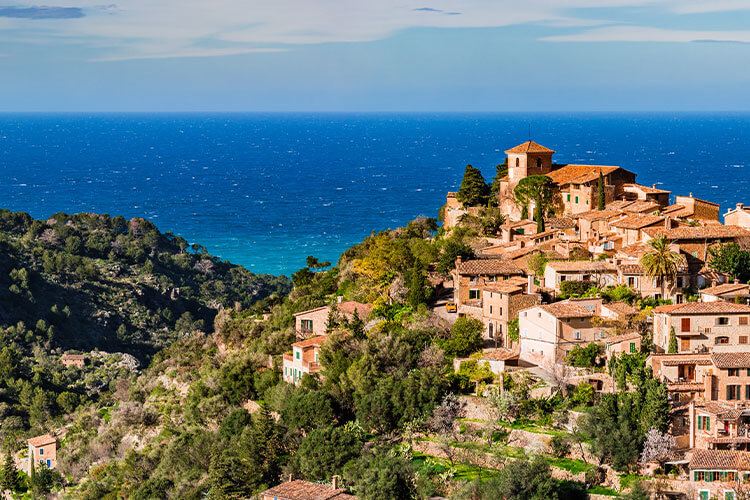
Deià, a picturesque village, marks the start (or the end) of this 20 km route through olive groves and holm oak woods. It’s a moderate to challenging hike, but the stunning views and historic trails make every step worthwhile.
Stage 3: Esporles – Banyalbufar – Estellencs
5 h · ↑500 m ↓450 · Difficulty:
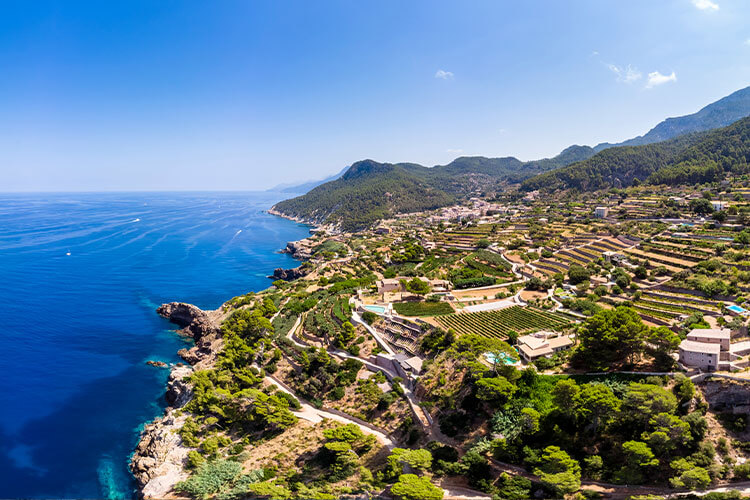
This 7.6 km stretch is a historical journey in itself, with trails dating back to Arab times and paths used by tobacco smugglers. It is a walk through time, surrounded by the captivating landscape of Mallorca.
Stage 2: Estellencs – Coll de Sa Gremola – La Trapa
7 h 15 min · ↑800 m ↓920 · Difficulty:
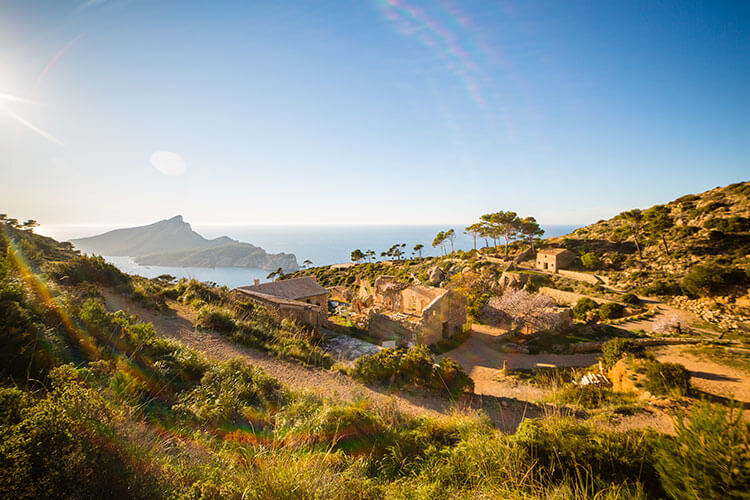
A walk of 7 hours and 15 minutes will take you through an oasis created by Trappist monks two centuries ago. Now a nature reserve, it is a testimony to the ecological and historical richness of the island.
Etapa 1: La Trapa – Sant Elm – Port d’Andratx
3 h 45 min · ↑600 m ↓330 · Difficulty:
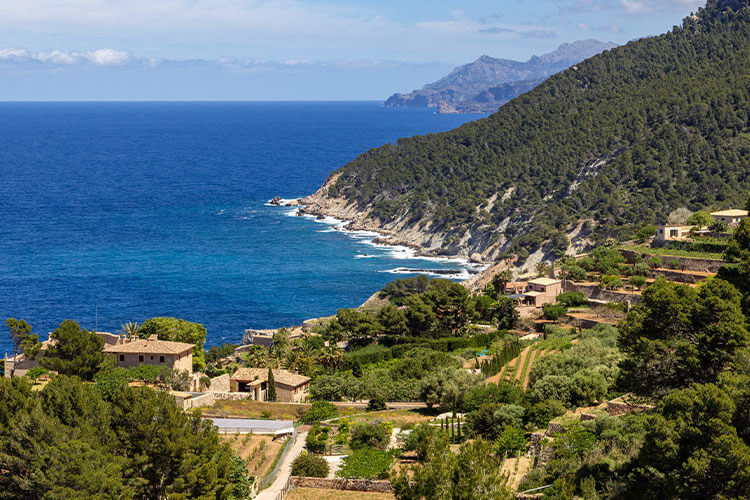
This 3-hour and 45-minute hike offers views of the fascinating island of Dragonera as you approach the southern end of the Serra de Tramuntana. It is a good start (or end) to an unforgettable trip.
Mallorca’s mountain refuges on the GR 221 route
Mallorca’s local government has gone to great lengths to offer hikers an experience straight out of a storybook. Not only have they restored and signposted the legendary Dry Stone Trail, but they’ve also dotted it with cosy mountain huts. Why? To encourage off-season tourism and offer hikers an authentic Mallorcan adventure.
But let’s put it this way: these lodges differ from your typical five-star hotels. We’re talking about monasteries converted into lodges, private estates tucked away in the hills and picturesque refuges that delight hikers. These are the kind of places that can only be reached with a good pair of hiking boots and an adventurous spirit.
Pro tip: book your bed in advance. These places are as popular with locals as they are with visitors.
Refuges on the GR 221 route:
- Coma d’en Vidal (Estellencs)
- Can Boi (Deià)
- Muleta (Sóller)
- Tossals Verds (Escorca)
- Son Amer (Escorca)
- Pont Romà (Pollensa)
Key Tips for Hiking in Mallorca
Hike the island’s trails with wisdom and admiration. With its sun-drenched Mediterranean climate and some 300 days of sunshine a year, Mallorca may seem like a hiker’s paradise all year round. But hold on to your hats (and hiking boots)! The Serra de Tramuntana is capriciously beautiful, with temperatures in the highlands that can drop surprisingly low, even during those mild months.
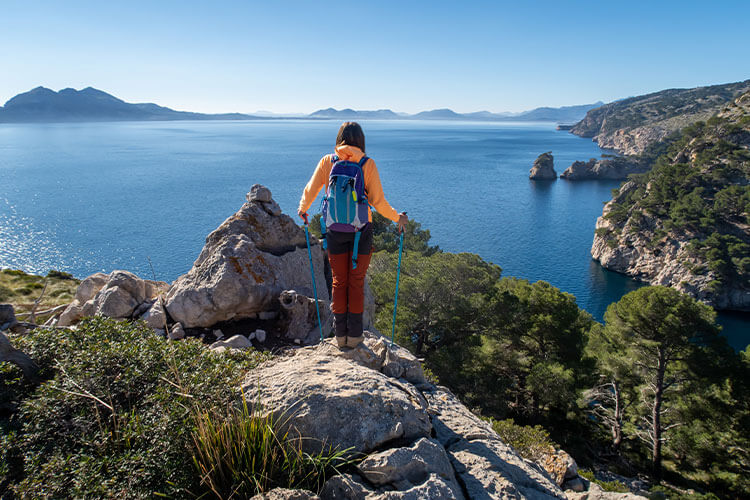
If you’re wondering when the best time is, spring and autumn are the best times – not too hot or cold, just right. Mallorca’s trails are welcoming all year round, as long as you come prepared.
Bring plenty of water (hydration is your best ally) and wear appropriate clothing.
A word of warning about the trail: much of it may take you through private land. You can cross them, but remember, you are not alone. You may encounter local livestock, so be a good guest: close the gates you open and leave no trace. It’s about respecting the land and its inhabitants, furry or not. ☺
Happy hiking!



Leave a Reply